着物好きなら一度は耳にしたことがあるかもしれない、特別な帯「丸帯(まるおび)」。花嫁衣装の豪華絢爛な後ろ姿や、京都の舞妓さんの艶やかな装いを思い浮かべてみてください。その中心で圧倒的な存在感を放つ帯こそ、かつて礼装の主役だった丸帯なのです。しかし、なぜ現代の日常生活ではほとんど見かけることがないのでしょうか?その背景には、時代の移り変わりと美意識の変遷が深く関わっています。
- 最高の格を持つ礼装用の帯: 表も裏も同じ豪華な錦織や唐織で作られ、昼夜帯や袋帯の原型となった歴史を持ちます。その格は、数ある帯の種類の中でも最高位に位置づけられます。
- 重さと豪華さゆえの変遷: 明治から大正にかけて主流でしたが、そのずっしりとした重さと高価さから、より軽く締めやすい「袋帯」へと主役の座を譲っていきました。
- 現代における希少価値: 現在、その姿は花嫁衣装や舞妓の装い、舞台衣装といった特別な場面に限られます。アンティーク品としての美術的価値も高まり、新たな形でその美が受け継がれています。
丸帯とは?その知られざる特徴と歴史
丸帯とは、女性の帯の中で最も格式が高いとされる第一礼装用の帯です。その最大の特徴は、幅約70cmの帯地を縦に二つ折りにして、筒状に仕立てられている点にあります。これにより、表も裏も同じ豪華な柄が現れる「全通柄(ぜんつうがら)」となり、どこから見ても華やかな印象を与えます。
江戸時代中期に誕生し、明治、大正、そして昭和戦前期に至るまで、丸帯は富裕層の女性たちの間で留袖や振袖に合わせる最も格の高い帯として愛用されました。当時、中国から伝わった金襴(きんらん)や錦織(にしきおり)、緞子(どんす)といった贅沢な織物がふんだんに用いられ、まさにステータスシンボルとしての役割も担っていたのです。
袋帯との違いと見分け方
現代の礼装用帯の主流である「袋帯」と丸帯は、しばしば混同されがちです。しかし、その構造と特徴には明確な違いがあります。
| 丸帯 | 袋帯 | |
| 構造 | 幅広の生地を二つ折りにした筒状 | 表地と裏地を縫い合わせた袋状 |
| 柄 | 表裏ともに同じ柄(全通柄) | 表に柄、裏は無地が多い |
| 重さ | 非常に重い(袋帯の約2倍とも) | 丸帯に比べ軽い |
| 幅 | 仕立て上がりの幅が広い(約34cm) | 約31cmが一般的 |
| 長さ | 約4m前後と比較的短い | 約4m30cm以上が主流 |
もしアンティークショップなどで古い帯に出会った時、その見分けるポイントは**「重さ」と「裏地の柄」**です。ずっしりとした重みがあり、裏返しても表と同じ豪華な柄が織り出されていれば、それは丸帯である可能性が高いでしょう。
なぜ現代では見かけないのか?その理由と変遷
これほどまでに豪華で格の高かった丸帯が、なぜ現代では日常的に使われなくなったのでしょうか。その理由は主に3つ挙げられます。
- 物理的な重さと扱いにくさ: 袋帯の2本分ともいわれる重さは、締める人にも介添する人にも大きな負担となりました。一人で手軽に締めることが難しく、長時間の着用は体力を消耗します。
- 経済的な理由: 表裏両面に柄を織り出す丸帯は、使用する糸の量も多く、非常に高価なものでした。
- 袋帯の登場: 昭和初期になると、裏地を無地や簡素な生地にすることで、軽くて締めやすく、かつ安価に制作できる「袋帯」が考案されました。これが時代のニーズに合致し、急速に普及。次第に丸帯は特別な日のための帯へとその役割を変えていったのです。
丸帯が輝き続ける場所
主役の座を譲ったとはいえ、丸帯がその輝きを失ったわけではありません。現代でも、その最高の格と美しさが求められる特別な場面で、丸帯は不可欠な存在として生き続けています。
- 婚礼衣装: 白無垢や色打掛の下に締められる「掛下帯(かけしたおび)」や、花嫁の引き振袖には、今も丸帯が用いられます。
- 舞妓・芸妓の衣装: 京都の花街では、舞妓が締める長い「だらりの帯」に丸帯が使われており、その華やかさは観光客の目を楽しませています。
- 舞台衣装・祭礼: 歌舞伎などの古典芸能や、歴史的な祭礼の衣装としても、その時代の姿を忠実に再現するために使用されます。
- アンティーク・リメイク: 美術品としての価値を持つアンティーク丸帯は、コレクターズアイテムとなっています。また、その豪華な生地を活かしてバッグやタペストリー、ドレスなどにリメイクされ、新たな命を吹き込まれています。
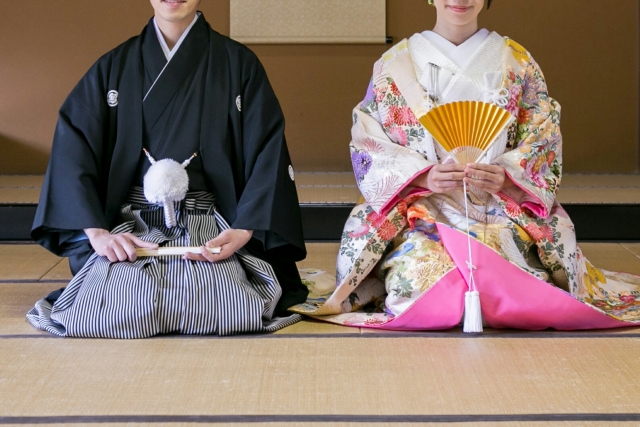
解説ポイント①:最高の格を持つ礼装用の帯
丸帯が「最高の格を持つ」とされる理由は、その成り立ちと用途にあります。帯には「丸帯」「袋帯」「名古屋帯」「半幅帯」といった種類があり、それぞれに適した着物や場面が存在します。この中で、丸帯は第一礼装である打掛、黒留袖、本振袖といった最も格式の高い着物に合わせるために作られました。文様も鶴や亀、鳳凰、松竹梅といった吉祥文様や、公家の装束にも用いられた有職文様など、おめでたい席にふさわしい、格調高いものが中心です。素材も正絹を用い、金銀糸をふんだんに使った豪華絢爛な錦織や唐織、綴織などで作られることが、その格を不動のものとしています。
解説ポイント②:重さと豪華さゆえの変遷
丸帯の重さは、時に4kgを超えることもあったと言われます。これは、幅広の生地を表裏なく豪華に織り上げ、さらに硬い帯芯を入れて仕立てたためです。この重厚感こそが丸帯の魅力であり、品格の源泉でしたが、同時に女性たちを締め付け、動きを制約する要因ともなりました。昭和に入り、女性の社会進出が進み、生活様式がより活動的になると、着物にも軽やかさや実用性が求められるようになります。そこに登場したのが、表地と裏地を別々に作ることで軽量化を実現した袋帯でした。袋帯は、見える部分(お太鼓や胴に巻く部分)にのみ柄を配した「六通柄」などを生み出し、コストを抑えつつも見た目の豪華さを損なわない工夫で、瞬く間に礼装用の帯の主役となったのです。この変遷は、単なるファッションの変化ではなく、時代の価値観や女性のライフスタイルの変化を映す鏡と言えるでしょう。
解説ポイント③:現代における希少価値
現在、新たに丸帯が制作されることは極めて稀であり、その技術を持つ職人も減少しています。そのため、現存する丸帯、特に状態の良いアンティーク品は非常に希少価値が高まっています。アンティーク市場では、その美術的価値や歴史的背景から高値で取引されることも少なくありません。また、着物として再び締めることが難しい状態の丸帯でも、その唯一無二の豪華な織り地は、優れたデザイン素材として注目されています。国内外のデザイナーやクリエイターが、この美しいテキスタイルをバッグ、ジャケット、インテリアファブリックなど、全く新しい製品に生まれ変わらせています。これは、伝統的な帯が形を変え、現代のライフスタイルの中で新たな価値を見出されている好例です。丸帯は、もはや単なる過去の衣装ではなく、日本の美意識と職人技を未来に伝える文化遺産としての側面も強めているのです。
参考文献
- 丸帯とは?袋帯との違いやリメイク活用方法、合わせる着物など解説 – お祝いの着物
- 帯の歴史~丸帯の誕生と衰退~【いまさら聞けない着物豆知識】 – こだわりきもの専門店キステ
- 丸帯(まるおび)とはどういうもの?構造や現代の使い方をまとめました | かふぇきもの Cafekimono
- 帯メーカーが徹底解説! 帯の種類・寸法・格・着物との合わせ方|KAWASHIMA Stories
- これだけは知っておきたい 「花嫁和装の用語辞典」 – 日本の結婚式
【English Article】
The Ultimate Guide to the Maru Obi: The Most Formal Sash Loved by Brides and Maiko
If you’re a kimono enthusiast, you may have heard of a special sash called the “Maru Obi.” Picture the gorgeous, ornate knot on the back of a bride in her traditional wedding attire, or the elegant ensemble of a maiko in Kyoto. The sash that commands such a powerful presence is the Maru Obi, which once reigned as the pinnacle of formal wear. But why is it so rarely seen in modern daily life? The story behind it is deeply connected to the shifting tides of time and evolving aesthetics.
- The Most Formal Sash for Ceremonial Wear: Made with the same luxurious brocade or Karaori weave on both the front and back, it is the historical predecessor to the Fukuro Obi and Chūya Obi. It holds the highest rank among all types of obi.
- A Transition Driven by Weight and Luxury: While mainstream from the Meiji to Taisho eras, its significant weight and high cost led it to cede its leading role to the lighter and easier-to-tie “Fukuro Obi.”
- Modern Rarity and Value: Today, its use is limited to special occasions such as bridal attire, maiko ensembles, and stage costumes. Its artistic value as an antique has also increased, allowing its beauty to be passed down in new forms.
What is a Maru Obi? Its Hidden Features and History
The Maru Obi is considered the most formal type of sash (obi) for women’s kimonos, intended for first-class ceremonial wear. Its most defining characteristic is its construction: a single piece of fabric, approximately 70 cm wide, is folded in half lengthwise and sewn into a tube. This results in a “zentsū-gara” (all-over pattern), displaying the same opulent design on both the front and back, creating a stunningly gorgeous impression from any angle.
Born in the mid-Edo period, the Maru Obi was cherished by women of the wealthy class as the most prestigious sash to pair with Tomesode and Furisode kimonos from the Meiji and Taisho eras through the pre-war Showa period. Lavishly woven with luxurious textiles imported from China, such as kinran (gold brocade), nishiki-ori (polychrome brocade), and donsu (damask), it also served as a powerful status symbol.
Differences and How to Distinguish it from a Fukuro Obi
The Maru Obi is often confused with the “Fukuro Obi,” which is the mainstream formal sash today. However, there are clear differences in their structure and characteristics.
| Maru Obi | Fukuro Obi | |
| Structure | A wide piece of fabric folded into a tube. | A pouch-like structure with front and back fabrics sewn together. |
| Pattern | Same pattern on both sides (all-over pattern). | Pattern on the front, often a plain back. |
| Weight | Extremely heavy (said to be twice the weight of a Fukuro Obi). | Lighter compared to a Maru Obi. |
| Width | Wider finished width (approx. 34 cm). | Generally around 31 cm. |
| Length | Relatively shorter, around 4 meters. | Mainstream is over 4.3 meters. |
If you come across an old obi in an antique shop, the key points to distinguish it are its “weight” and “the pattern on the back.” If it feels substantially heavy and reveals the same luxurious pattern on the reverse side, it is likely a Maru Obi.
Why Is It a Rare Sight Today? The Reasons and Transition
Why did the Maru Obi, once so luxurious and highly regarded, fall out of common use in the modern era? There are three main reasons:
- Physical Weight and Difficulty in Handling: Its weight, sometimes compared to two Fukuro Obi combined, was a great burden for both the wearer and the person assisting with dressing. It was difficult to tie by oneself, and wearing it for long periods was physically exhausting.
- Economic Reasons: With patterns woven on both sides, the Maru Obi required a large amount of thread, making it extremely expensive.
- The Advent of the Fukuro Obi: In the early Showa period, the “Fukuro Obi” was invented. By using a plain or simpler fabric for the lining, it was lighter, easier to tie, and more affordable to produce. This new style met the demands of the era and quickly became popular. Gradually, the Maru Obi transitioned into a sash reserved for very special occasions.
Where the Maru Obi Continues to Shine
Although it has yielded its leading role, the Maru Obi has not lost its brilliance. Even today, it remains an indispensable presence on special occasions where its supreme formality and beauty are required.
- Bridal Attire: The Maru Obi is still used as the kakeshita-obi (sash worn under the outer robe) for shiromuku (pure white) and iro-uchikake (colored) wedding gowns, as well as with the bride’s hiki-furisode (trailing-sleeve kimono).
- Maiko and Geiko Costumes: In the hanamachi (geisha districts) of Kyoto, the long, trailing “darari no obi” worn by maiko is a Maru Obi, and its splendor delights tourists.
- Stage Costumes and Festivals: It is used in classical performing arts like Kabuki and in historical festivals to faithfully recreate the attire of the period.
- Antiques and Upcycling: Antique Maru Obi with artistic value have become collector’s items. Furthermore, their luxurious fabric is being repurposed into bags, tapestries, and even dresses, breathing new life into them.
Analysis Point ①: The Most Formal Sash for Ceremonial Wear
The reason the Maru Obi is considered the “most formal sash” lies in its origin and purpose. There are various types of obi, including the “Maru Obi,” “Fukuro Obi,” “Nagoya Obi,” and “Hanhaba Obi,” each suited for different types of kimono and occasions. Among these, the Maru Obi was created to be paired with the most formal kimonos, known as Dai-ichi Reisō (first-class ceremonial wear), such as the Uchikake, Kuro-tomesode, and Hon-furisode. The motifs are also highly formal and auspicious, centered around kisshō-monyō (auspicious patterns) like cranes, turtles, phoenixes, and pine-bamboo-plum combinations, as well as yūsoku-monyō, which were used in the attire of the court nobility. Its status is solidified by its materials: pure silk, lavishly woven with gold and silver threads in magnificent styles like Nishiki, Karaori, and Tsuzure-ori.
Analysis Point ②: A Transition Driven by Weight and Luxury
It is said that a Maru Obi could sometimes weigh over 4 kilograms. This was due to its construction from a wide, luxuriously woven fabric without a distinction between front and back, reinforced with a stiff inner core. This substantial feel was the source of the Maru Obi’s charm and dignity, but it also restricted the wearer’s movement. As Japan entered the Showa period, women began to play a more active role in society, and lifestyles became more dynamic, creating a demand for lighter and more practical kimonos. The Fukuro Obi emerged to meet this need. By creating a separate front and lining, it was significantly lighter. The Fukuro Obi also introduced cost-effective innovations like the “rokutsū-gara,” where the pattern only appears on the visible parts (the main knot and the part wrapping the torso), without sacrificing the appearance of luxury. It quickly became the dominant formal sash. This transition is not merely a fashion trend but a mirror reflecting the changing values and lifestyles of women in that era.
Analysis Point ③: Modern Rarity and Value
Today, the production of new Maru Obi is extremely rare, and the number of artisans possessing the skills to make them has dwindled. As a result, existing Maru Obi, especially well-preserved antiques, have become highly scarce and valuable. In the antique market, they are often traded at high prices due to their artistic merit and historical significance. Even Maru Obi that are no longer in a condition to be worn as a sash are gaining attention as unique design materials. Designers and creators, both in Japan and internationally, are transforming these beautiful textiles into entirely new products like bags, jackets, and interior fabrics. this is a prime example of a traditional sash finding new value in modern lifestyles by changing its form. The Maru Obi is no longer just a relic of the past; it is increasingly recognized as a cultural heritage that carries Japan’s aesthetic sense and craftsmanship into the future.
References
- What is a Maruobi? Explaining its differences from a Fukuro Obi, use in upcycling, and matching kimonos – Oiwai no Kimono
- The History of Obi ~ The Birth and Decline of the Maru Obi ~ [Kimono trivia you can’t ask about now] – Kimonoya Kisste
- What is a Maruobi? Structure and Modern Usage Explained | Cafekimono
- An Obi Manufacturer’s Thorough Explanation! Types of Obi, Dimensions, Formality, and How to Coordinate with Kimono | KAWASHIMA Stories
- Things You Must Know: “A Glossary of Bridal Kimono” – Nihon no Kekkonshiki

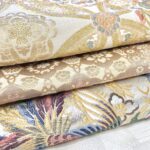


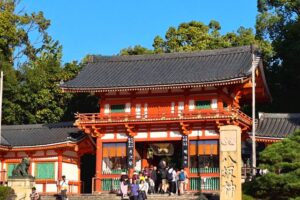
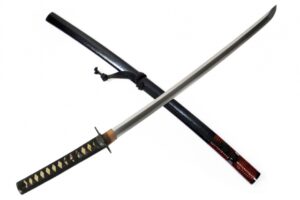
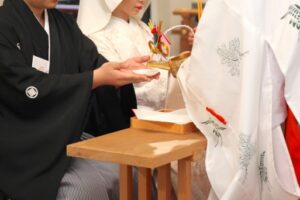

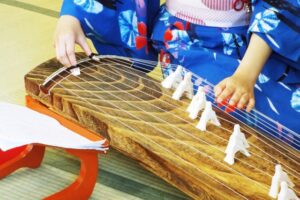
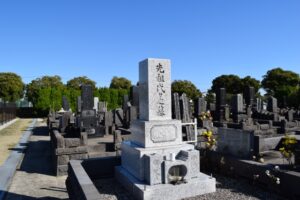
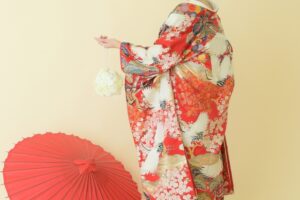
コメントを残す